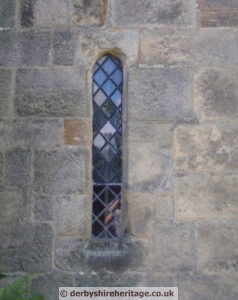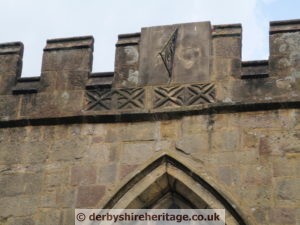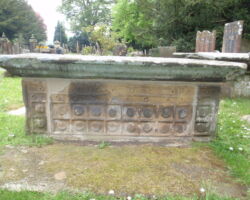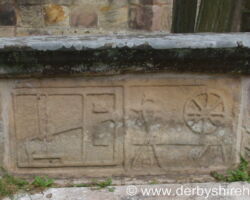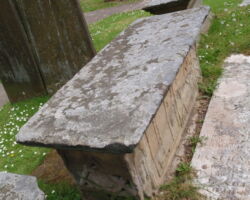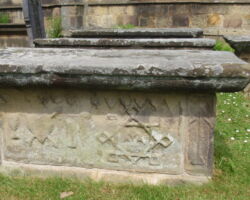Darley Dale St Helens church dates from the 12th century and contains monuments to Sir John de Darley who was Lord of the Manor over 600 years ago.
An Act of Parliament was passed in 1666 to try and boost the depressed English woollen trade. It ordered that no-one was to be buried in anything other than woollen material.
The following notes were written in Darley Dale burial register: “No corpse of any person (except those who shall die of the plague) shall be buried in any shift, sheet, shroud, or anything whatsoever made or mingled with any flax, hemp, silk, heir, gold or silver, or in any stuff or thing, other than what is made of sheep’s wool, only upon pain of the forfeiture of £5.”
Many burial registers give names followed by the words “buried in woollen”.
Another interesting entry in Darley Dale burial register tells that in 1704 ‘a man died when the earthquake came’.
Celtic carvings have been built into some Christian churches. Small statues of Sheela-na-Gig, goddess of creation and fertility, can be seen at St Helen’s.
During the restoration of the church in 1854 a fragment of a cross shaft was found. The portion was 19 inches long by 15 inches wide by 11 inches thick which suggests that the original cross was of considerable height. One wide face has a plait and ring pattern which fails to match many other examples in symmetry, and one of the narrow faces a twist and ring pattern. It is now in the Weston Park Museum, Sheffield.
In 1635 Church Lane was known as Ghost Lane after a Scottish pedlar was murdered there. Ghost stories about murdered Scottish pedlars come from Darley Dale, Hayfield and Eyam wakes. Pedlars tended to be called Scottish only because they sold cheap Scottish linen.
Historically, people with leprosy were treated with great suspicion and usually forced to leave their homes and settlements and live away from everyone else in ‘leper colonies’ depending on charity to survive. People were also made to wear special clothing to let others know they had leprosy, to walk away from others, and to ring bells to advertise their presence.
In 1873 Gerhard Henrik Armauer Hansen identified the bacterium Mycobacterium leprae as the infectious cause of leprosy and is also called Hansen’s disease.
There was a leper hospital at Spital see The Story of Spital.
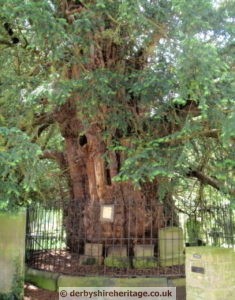
Set high in the battlemented wall of St Helens church at Darley Dale is a stone wall dial. The face of the dial is badly eroded. It has a scroll work gnomon made of iron.
The sundial was erected on the church of St Helen by Rev.William Wray in the 18th century to encourage punctuality amongst his parishioners, who, in his opinion, spent too much time gossiping under the ancient yew tree.
The carvings on the side of this table tomb date from the mid-18th century when the Huegenots who were Protestant exiles fled from France to England.
The carvings of weavers frames show the trade they brought with them.
A carpenter’s tomb carved with the tools of his trade can be seen at St John the Baptist Church Ault Hucknall.


